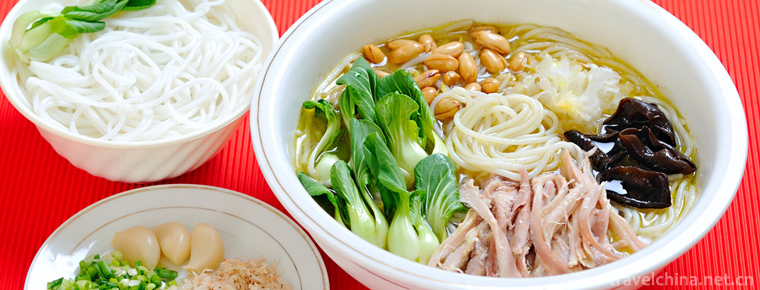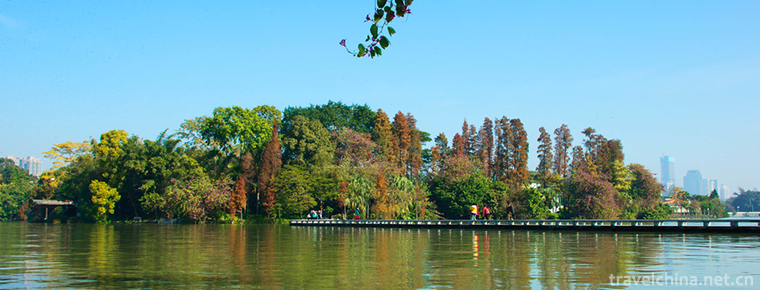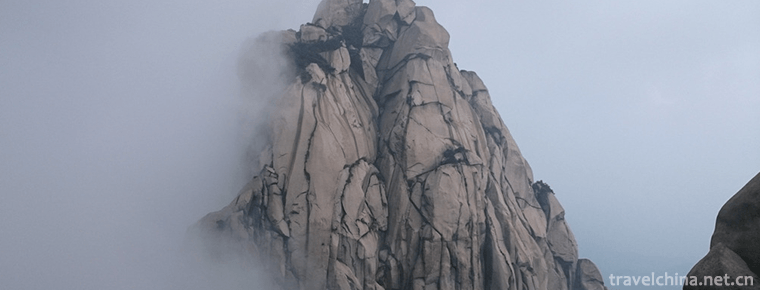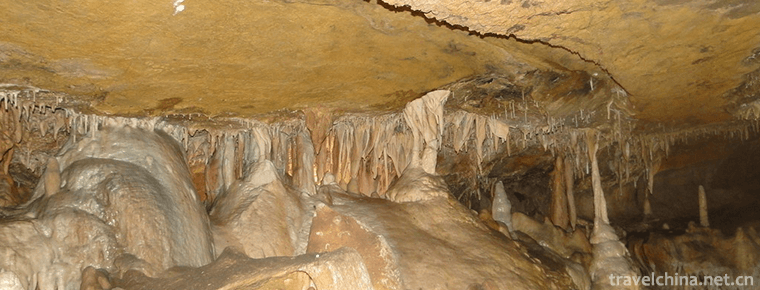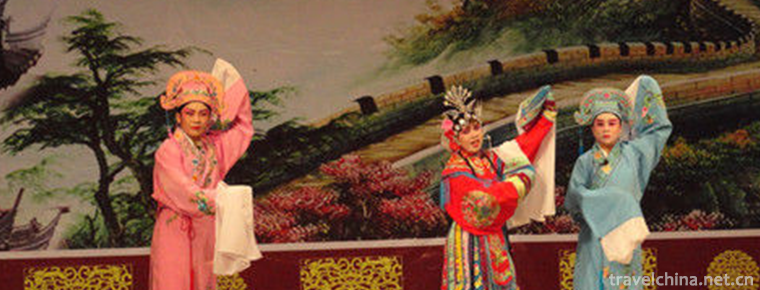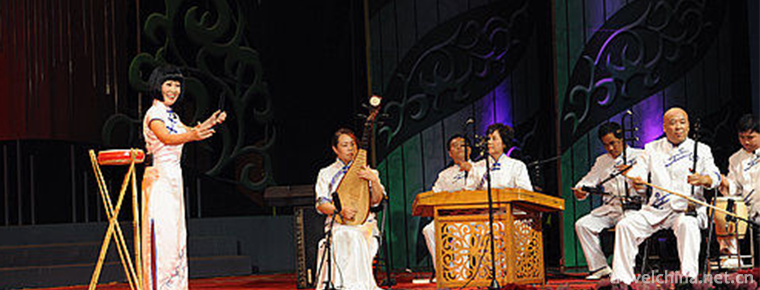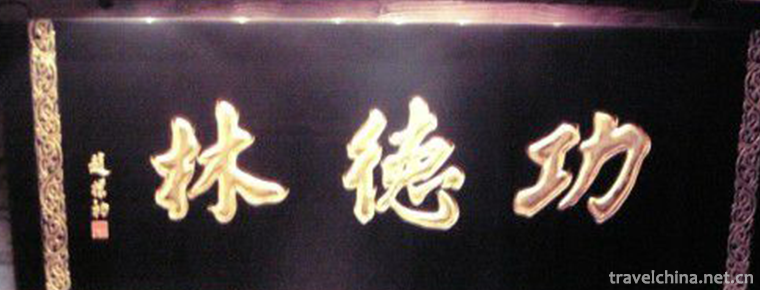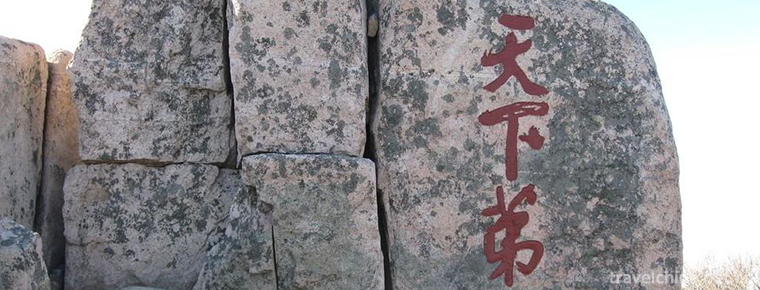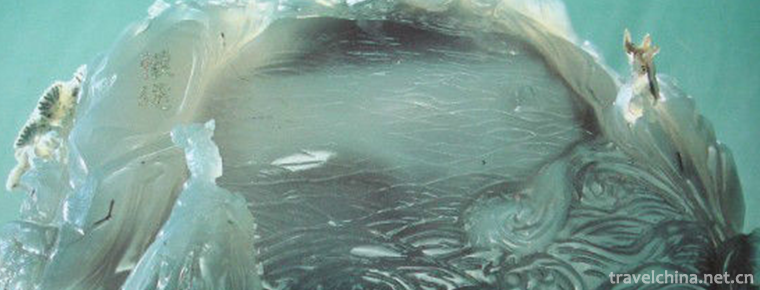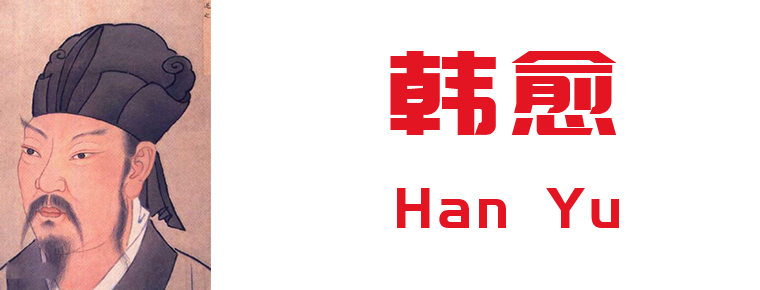Bowang mountain
Bowang mountain
Bo (B ó) Wang mountain, also known as Bowang mountain. Bowang mountain is one of the most important breeding and living places of the ancient Bo nationality. It was known as lunzhudadun and shitoudazhai in ancient times, and was named as Bowang mountain by Emperor Hui Zongzheng and the seventh year of Song Dynasty. Here, the bamboo forest is dense and the feiwu cave is spectacular.
Located in bowangshan Town, Xingwen County, Yibin City, Sichuan Province, it is a provincial-level karst scenic area. In the north of bowangshan Town, 20 km to the west of Xingwen County, it is connected with the trough dam and is connected with Yemo traffic. The terrain of Bowang mountain is abrupt, with cliffs on all sides in the sky, and the black hat top of the main peak is towering into the clouds, with an altitude of 1180 meters. The mountain forest vegetation is green, the sea is vast, quiet and elegant; the mountain gate, valley and stream, waterfall Lake pool, cave stone and other natural landscape characters melt into the universe, natural.
Traffic information
Chengdu Guiyang High Speed Railway: Xingwen station of Chengdu Guiyang high speed railway -- Bowang mountain is 30km away (you can take the through train of Bowang Mountain Tourism)
airport
Wuliangye Airport -- Bowang mountain (120km)
Luzhou Yunlong Airport -- Bowang mountain (120km)
Chengdu Xingwen Expressway S4 (about 190km) is driven to Zigong to g85 (NEI Yi Expressway) to Yibin (about 75 km), then to Xingwen direction to bowangshan station, directly to the gate of the scenic area, and then drive 4 km to the terminal (about 370 km).
Ya'an-xingwen expressway runs along G5 (Beijing Kunming Expressway) to Hongya direction (about 30km) to G93 (Chengdu Chongqing Ring Expressway) to Leshan Yibin (about 233km) to Xingwen direction to bowangshan station, directly to the gate of the scenic spot and drive 4 km ahead to the terminal point (about 380 km).
Chongqing Luzhou Xingwen Expressway G93 (Chengdu Chongqing Ring Expressway) drives (about 130 km) to Luzhou, turns to G76 (Xiamen Chengdu Expressway), drives to Xingwen Xuyong direction, arrives at Jiangmen station expressway, drives along Jiangxing Road (express channel) to Bowang mountain scenic area for 40 km and reaches the terminal point (about 380 km).
Take Leshan Xingwen Expressway G93 (Leyi Expressway) to Yibin (about 170 km) and turn to (Yi Xu Expressway) to Xingwen Xuyong, then drive to bowangshan station, then drive 4 km to the terminal (about 300 km).
Zigong Xingwen expressway runs along g85 (NEI Yi Expressway) to Yibin (about 75 km) and turns to Xingwen Xuyong to Xingwen Xuyong, and then drives 4 km to the end (210 km).
Yibin Xingwen expressway runs along Yibin Xingwen Expressway to bowangshan station, and then drives 4 km to the destination (about 120 km).
Neijiang Xingwen will drive along g85 (Neijiang Yichang Expressway) to Yibin (about 120 km), turn to (Yi Xu Expressway) and drive to Xingwen Xuyong to Xingwen Xuyong, and then drive 4 km to the terminal (about 250 km).
Introduction to scenic spots
Bowang mountain, located in Xingwen County, Yibin City, Sichuan Province, is a karst provincial scenic area with a total area of 60 square kilometers.
In the town of bowangshan, 20 kilometers west of the county, there are channels and dams connected with each other, and there is a lot of traffic between Yemo and Bowang mountain. The main peak of Bowang mountain is up to 1180 meters above sea level. Mountain L has lush vegetation, vast sea, quiet and elegant; Mountain Gate, valley and stream, waterfall lake and lake, cave stone and other natural landscape characters melt into the universe and become natural. There are mainly feiwu Valley, Daodong, heimaoding, Shoushan lake and other areas. Collect the essence of landscape, and sink the Grand View of waterfall.
There are five streams running from south to North in Bowang mountain, which run through the mountain gate and valley, forming a large number of waterfalls with different shapes: the DreamStream cascading waterfall with ups and downs, the Longquan waterfall with flying flow, such as the white dragon coming out of the cave, the simultaneous waterfall of "roaring three sounds of rain" and the Baopen Valley surrounding waterfall surrounded by waterfalls in all directions after the rain Bo people have no present, and the ancient village remains attractive. Bowang mountain has been a famous mountain since ancient times. It used to be named shitoudazhai, lunzhudadun, also known as nanchun mountain.
Since the Song Dynasty, it has been the birthplace of the duzhang (Bo) people. According to the county records, in 1115 A.D., Wudou Yi (a branch of Bo people) took this mountain as a base. Since the troops set out to fight against it, Bowang mountain is also known as Bowang mountain. Up to now, there are still relics of battle fields built by Bo people, such as big and small village gates, ancient city walls and ancient castles. In February 2000, Bowang mountain was officially approved as a provincial key scenic spot by the people's Government of Sichuan Province. The famous mountains are sleeping, and the spring breeze is coming slowly, and they are among the scenic spots. With the deepening of tourism development and construction, Bowang mountain will become the leisure and sightseeing of the vast number of tourists with its charming landscape, magical culture of Bo people and high-quality ecological environment, as well as experience the connotation of the theme of "ecology and health" in the 21st century and return to nature. "Harmony of man and nature" is a tourist attraction with endless fun.
Later, together with Xingwen Shilin, it became a World Geopark approved by UNESCO. It has become one of the four major areas of Xingwen World Geopark.
Food introduction
Bowang mountain is located in Yibin City. Yibin's food is mainly characterized by spicy food. Yibin's fried noodles, special stewed chicken noodles, Baixi Chaogao cake, Pipa winter leg, Yibin salted duck, Jiang'an bamboo spring, husband and wife's lung slices, strange flavor chicken, spicy hot pot and chuanchuanchuanxiang are also very delicious and economical. Yibin Ramen is the most distinctive snack in Yibin. It was originally called Xufu ramen. What is "burning noodles"? Because the oil is heavy and the surface is dry, it will ignite immediately when it is ignited, so it is called burning noodles. The method is to Yibin yellow sprout vegetables, small grinding sesame oil, sesame, peanut, walnut, pepper, pepper, pepper and other materials directly coated on the surface, characterized by red, fragrant, spicy, dry. In Yibin City Street Garden, No. 17, Renmin Road, you can taste this flavor.
History of scenic spots
Bowang mountain has been a famous mountain since ancient times. It used to be named shitoudazhai, lunzhudadun, also known as nanshaushan. Since the Song Dynasty, it has been the birthplace of the duzhang (Bo) people. According to the county records, in 1115 A.D., Wudou Yi (a branch of Bo people) took this mountain as a base. Since the troops started to rebel, Bowang mountain is also known as Bowang mountain. Up to now, there are still relics of battle fields built by Bo people, such as big and small village gates, ancient city walls and ancient castles. In February 2000, Bowang mountain was officially approved as a provincial key scenic spot by the people's Government of Sichuan Province. In February 2005, it was designated as the World Geopark, bowangshan Park, by UNESCO. At present, the scenic spot has completed a series of preliminary work, such as the overall planning, detailed planning, single building design, etc., and the protection and development of the scenic spot are proceeding orderly.
Main attractions
Mountain Gate
The gate of Bowang mountain scenic area is the landmark building of Bowang mountain scenic area. The gate is 48 meters long and 11.8 meters high, respectively, which means the circumference of heimaoding, the main peak of hanbowang mountain, is 4.8 kilometers long and 1180 meters above sea level. The mountain gate is built on the basis of the mountain. The surface of the gate is made of plastic stone, which vividly depicts the strange thousand layer rock type and the steep and steep strange peaks and rocks created by the Paleozoic Silurian period millions of years ago. Historical records show that the Bo people, known as PU, man and Du Lao in ancient times, have disappeared. The stone houses of Bo inhabit mountains and cliffs. They are thick and solid, and can prevent animals from disturbing and invading from outside. At the top of the mountain gate, according to relevant records, a stone house was built according to the living habits and living customs of the Bo people, which is a cultural representation of the ancient Bo people.
The whole architectural style of the Mountain Gate in the scenic area is vigorous and simple, and the atmosphere is awe inspiring. It complements each other with the green mountains and waters. It fully shows the strange landscape style and unique and profound historical culture of Bowang mountain.
World Geopark monument
Bowang mountain park is one of the four major parks in Xingwen World Geopark. The main monument is built at the entrance of xiaoyanwan Park in Xingwen stone sea scenic area. This stele is the symbol of Bowang mountain as a World Geopark Park, with a height of 5.9 meters. The base rock of the stele is made of the green brown stone with horizontal and flat grain on the Bowang mountain. It imitates the natural rock shape of feiwu Valley, and the rock is engraved with the golden rock paintings of Bo people. The base design not only naturally integrates the characteristics of the park, but also reflects the unique and profound cultural heritage of the park. The stele body is made of natural reddish brown sand and stone, with one upright and one inverted cone. The rising sharp corner symbolizes the peak, which abstractly reflects the "strange and dangerous" characteristics of the park. The upper triangular cone is hollow out, and the hole shape is the deep and characteristic karst cave entrance shape of the park, which is the embodiment of the world's unique "Xingwen karst landform". The gradual melting relief effect gives people a natural and changeable aesthetic feeling, reflecting the "quiet and beautiful" characteristics of the park; the top is inlaid with the logo of the World Geopark. On the side of the stele, the lower part carves a brief introduction of the park. The bottom part is made of imitation bamboo patterns, and the upper part is carved with bamboo shoot texture relief. It looks like a reddish brown bamboo shoot, which reflects the characteristics of the bamboo sea in the park, and also implies that the development of the park is rising like bamboo shoots after a spring rain. The bronze drum "Sun emblem" is the most worshipped totem of Bo people on the ground around the monument, which reflects the rich culture of Bo nationality.
Museum of Bowang Mountain Park
Built in 2006, the Museum of Bowang mountain park is a gathering place for geological science popularization and cultural exhibition.
The park has a variety of geological relic landscapes, such as canyons, waterfalls, lakes, karst caves, ancient sites and religious temples, as well as cultural landscapes such as the remains of Bo people. It is charming, mysterious and fascinating. In the museum, there are geological specimens, fossils, production and living utensils of the ancient Bo nationality, etc. The Museum introduces and displays the natural landscape and human culture of Bowang mountain park from various angles in the form of physical objects, words and pictures.
Chaqi mountain
Hundreds of meters before entering the mountain gate, a cone-shaped peak rises from the ground on the right side of the road. The mountain is full of beautiful flowers and green bamboos. This mountain is the famous "flag mountain". The geographical position of Chaqi mountain is extremely important. It is the frontier position of Bo people in the stronghold of Bowang mountain. It is also the place where Bo people stand guard and guard when there are foreign enemies. It is said that the Bo people who lived in the big village and small village of Bowang mountain came to watch the sentry in turn. When they found out that there was an enemy situation, they would raise the village flag, light the wolf smoke, beat the bronze drum, and sound the horn. The Bo people in the small village of the Dazhai village would pour out to organize defense. At present, there are still large stone holes where flagpoles were placed and ancient stone stoves with smoke. It is said that in November 1862, Shi Dakai led the rebel army from Zhenxiong, Yunnan Province, and sent several troops to Sichuan, so that the Qing army could not look after each other. Shi Dakai marched in a circuitous way and went around a large circle. In late November, he unexpectedly defeated the Hunan army stationed in southern Sichuan, occupied Junlian and Gaoxian County, and the vanguard pointed to Hengjiang town. Soon after, they occupied Hengjiang town and the nearby shuanglongchang and yuhuanglou, and drove straight into Xingwen. They had stationed here to put up flags and rest for tens of miles. The banners looked at each other and heard the golden drums, which opened the prelude to the Hengjiang war.
Cultural heritage
Bowang mountain is an ancient famous mountain in Yibin, Sichuan Province. It is located in Yanyang Town, 20km west of Xingwen County, Yibin. It is located between the two scenic spots of Zhuhai and shihaidong Township in southern Sichuan. It is a key scenic spot in Sichuan Province. From the Yin Dynasty (1401 BC) to the first year of Wanli of the Ming Dynasty (1573 A.D.), the Bo people lived in southern Sichuan and parts of Northeast Yunnan. Bowang mountain is one of the important activity centers of Bo people. In the Song Dynasty, an independent kingdom of Bo people was gradually formed. In 1115 A.D., under the leadership of Bu Lou, the leader of the Northern Song Dynasty, the Bo people built battlements and gates on the Bowang mountain, gathered people to revolt and revolt. However, they were defeated by the "fire monkey battle" of the song army, and the king of Bo was captured by the song army and then moved to safety. At present, the Chaqi mountain at the east gate of the Bo king is the place where Bo Wang Buluo planted his flag. Under the black hat top, the main peak of Bowang mountain, remains of the village gate and battlements built by the Bo people. The original size of the village gate was two, more than 200 meters apart, built along the mountain, but the small gate has been destroyed, the big gate and the city battlements are still standing, and there is a "peach garden abyss" inscription on the side of the Dazhai gate, lying between the weeds. In the 14th year of the Ming Dynasty, the people led by Liu Gongwei and the emperor of Boxian were defeated again in the Ming Dynasty Trace, an ancient nation disappeared from then on.
Development of scenic spots
At present, 500 summer villas are planned to be built in the scenic area, named Shangri La. In the future, the completion of Yichang Xuzhou Expressway and Chengdu Guiyang high speed railway will make the transportation more convenient, and more and more tourists will come to visit.

-
Chill chicken rice noodles
Cold chicken noodles, Yunnan snacks, cold rice noodles with ....
Views: 269 Time 2018-10-17 -
Steamed chicken feet with oyster sauce
Oyster Emperor steamed chicken feet, a featured delicacy, the main raw materials are chicken feet, small red pepper, oyster oil and so on, suitable for all ages..
Views: 228 Time 2018-11-02 -
West Lake Scenic Spot in Hangzhou
Hangzhou West Lake Scenic Spot is located in the center of Hangzhou City, Zhejiang Province. It is divided into lakeside area, Lake Center area.
Views: 104 Time 2018-12-07 -
Mount Tianzhu Scenic Area
Tianzhu Mountain Scenic Spot, located in the west of Qianshan City, Anqing City, Anhui Province, is known as "the first mountain in the Yangtze River and Huaihe River" for its main peak.
Views: 118 Time 2018-12-08 -
Lushan Karst Cave Group Scenic Area
Yiyuan Karst Cave Group is located in Nanlushan Town, 7 kilometers northwest of Yiyuan County. It has been proved that there are more than 100 caves in the area of 5 square kilometers around the ape-m.
Views: 164 Time 2019-02-06 -
Taoist Drama
Taoist sentiment is a category of traditional Chinese folk art. It originated from Taoist songs such as Chengtian and Jiuzhen in Tang Dynasty. The Southern Song Dynasty began to accompany with fishing.
Views: 269 Time 2019-04-25 -
Kimchi Making Skills Korean Kimchi Making Skills
Kimchi of Korean nationality is one of the traditional food with the most national characteristics of Korean nationality, and its pickling method is constantly enriched and developed. In the long hist.
Views: 299 Time 2019-06-09 -
Sanxianshu
Sanxianshu, also known as Qianzi Shu and Leg Blackboard Shu, is an ancient traditional rap art formed in Nanyang, Henan Province. It has a history of more than 250 years. It is named for its main acco.
Views: 116 Time 2019-06-12 -
Vegetarian production skills
Gongdelin vegetarian food originated in temples. During Tongzhi period of Qing Dynasty, Temple vegetarian food gradually entered society. In 1922, the disciples of Wikipedia, a Buddhist monk at Changj.
Views: 291 Time 2019-06-17 -
Legend of Mount Tai
Taishan legend is one of the folk legends in Shandong Province. According to legend, the history of the Theocracy of Taishan God in charge of life and death can be traced back to the pre-Qin period. A.
Views: 194 Time 2019-06-18 -
Jade carving
Jade carving is one of the oldest carving varieties in China. Jade carved into exquisite crafts, known as jade carving. Craftsmen in the production process, according to the natural color and shape of.
Views: 343 Time 2019-07-16 -
Han Yu
Han Yu (768 - 824 December 25th) retreated. Henan Heyang (now Henan Province Mengzhou People. Claiming to be "Changli," the world is called "Han Changli" and "Mr. Changli".
Views: 153 Time 2019-09-07
